 
|
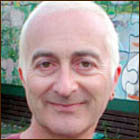 Tony
Robinson
Tony
Robinson
Tony Robinson, the series
presenter, is probably best known for his role as Baldrick in Blackadder
and as the Sheriff of Nottingham in Maid Marion and Her Merry Men,
which he also wrote. He has a keen interest in history and
archaeology – he is president of the Young Archaeologists' Club
– and is particularly fascinated by ancient Greece and the
biblical lands of the Middle East. |
 Mick
Aston
Mick
Aston
Mick grew up in the Black
Country of the Midlands. His father, a manual worker, was interested
in archaeology – not the usual castles and abbeys but rather
prehistoric sites such as standing stones. When Mick was 15, he
camped near Stonehenge. Although it was after hours and closed to
the public, the monument, bathed in dramatic lighting, made a great
impression on him, and his father later gave him a book about it.
|
|
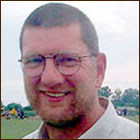 Stewart
Ainsworth
Stewart
Ainsworth
Stewart Ainsworth, Time Team's
'lumps and bumps' man, has his hands full. Not only does he work for
Time Team, but he also has a
full-time job as a senior investigator and project manager for
English Heritage. Based in York, his area of operation covers the
north of England. Together with his skilled team of investigators,
Stewart travels the countryside surveying, recording and
investigating archaeological sites. |
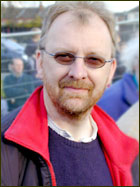 John
Gater
John
Gater
John has been involved in
archaeological geophysics for 18 years, working for British Gas, the
Ancient Monuments Laboratory (English Heritage) and Bradford
University Research. In 1986, he set up Geophysical Surveys (later
known as GSB Prospection), an independent consultancy in geophysics
for archaeology. He is also associate editor of the Journal of
Archaeological Prospection. |
|

Carenza
Lewis
In 1985, following study at
Cambridge University and taking part in an archaeological dig in
Jordan, Carenza joined the Royal Commission on the Historical
Monuments of England, now part of English Heritage, as a field
archaeologist for Wessex. Although she has a speciality in the
medieval landscape, she has worked on sites from many periods –
from prehistoric Avebury to the 'Mulberry harbours' used for the
D-Day landings of World War II. For two-and-a-half years, she was
seconded to the History Department of Birmingham University, where
she was involved in bringing together all sorts of information from
a wide variety of sources to investigate how the landscape of the
East Midlands affected settlement and vice versa. She later repeated
the same exercise for Hampshire and the Isle of Wight. She is now
based at the University of Cambridge. |
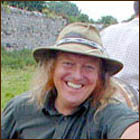
Phil
Harding
Phil still works as a field
archaeologist with Wessex Archaeology, and has been involved in a
project listing all known Palaeolithic sites in Britain. He has also
completed a number of excavation reports – including some for Time
Team – on sites ranging from the Palaeolithic to the Industrial
Revolution. He continues to demonstrate flint-knapping at craft
shows and to local societies.
Where did Phil get that hat?
Find out here.
|
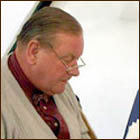
Robin
Bush
Robin Bush was born at Hayes,
Middlesex in 1943. His father was first a schoolmaster and then a
training college lecturer (in mathematics) and the family moved
around quite a bit before settling at Exeter in 1948, transferring
to Exmouth a few years later.
|
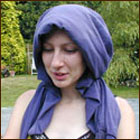
Jenni
Butterworth
Jenni can't remember how she
first got interested in archaeology, but she always quite liked
history at school and did her first work experience at Warwick
Museum when she was 15, so she was obviously into archaeology by
then. She did a degree in archaeology at Bristol University, and in
her final year took Mick Aston's monasteries course. After meeting
Mick and finding she was interested in the same subjects as him, she
decided to do a PhD on monasteries and their estates in the West
Country, with Mick as her supervisor. It was while she was working
on her PhD that Mick first invited her to do some digging for Time
Team. The first programme she did was a monastery she was studying
called Templecombe, in Somerset (recorded in 1995). Jenni finished
her PhD in 2000, and graduated to become Dr Butterworth in July
2001. |

Victor
Ambrus
The quiet artist we are all familiar with
has quite a vivid past: in 1956, Victor took part in the Hungarian
Uprising. When a building that he and his fellow students held came
under fire from the Soviets, he escaped and he eventually left his
native Hungary. On his arrival in London, he began to study at the
Royal College of Art. |

Guy
de la Bédoyère
Guy de la Bédoyère has
appeared in a number of Time Team programmes as an expert on the
Roman period. In addition, his expertise in second world war
aircraft was called upon for the Wierre
Effroy programme, in the 2000 series, covering the excavation in
France of the 92 Squadron Spitfire, which crashed on 23 May 1940;
and the Reedham
Marshes programme, in the 1999 series, which excavated a crashed
USAF Flying Fortress. |
|
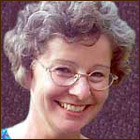
Margaret
Cox
Professor Margaret Cox is a
forensic archaeologist and no stranger to Time Team as a human
remains expert.
Today Margaret Cox is a professor, senior lecturer and course leader
for the well-respected forensic archaeology courses at Bournemouth
University. She has made numerous appearances on television, which,
together with her published work, have earned her the respect of
both the viewing public and the archaeological establishment.
|

Mick
The Dig
Mick has been involved in
archaeology for almost 20 years. Way back in the 1970s, resplendent
in his flared trousers (long gone, but the hairstyle has survived),
he got into mechanical engineering and received a HND. Stuck in a
factory, he missed the outdoors and so got a job as an
archaeological assistant. He was hired simply because he owned a
yellow Morris Minor van and no one else on the team had transport.
Although he got into archaeology because he hated working in a
factory, Mick's favourite period is industrial archaeology. Some of
this has been in the Potteries and at Ironbridge in Shropshire, near
where he has built his own house. |
|
 Time Team
Time Team  Time Team
Time Team 
